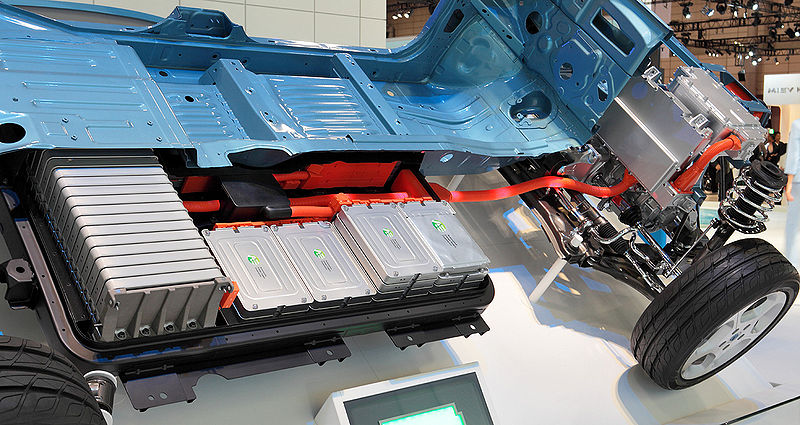President Joe Biden and Democrats are pushing regulations and legislation to transform how Americans drive and how the vehicles used on the nation’s roads are powered.
Currently EVs make up less than 2 percent of the cars sold in the United States each year, despite two decades of government support and promotion.
President Biden and Congressional Democrats are pushing policies to change that, using carrots and sticks.
Taxes, Restrictions, and Subsidies
To make gasoline- and diesel-powered vehicles more expensive and thus less attractive the Biden administration has ratcheted up corporate average fuel economy standards to levels most mid-size and large cars, SUVs, and light trucks won’t be able to meet. Under the law, automakers have to pay a tax on every vehicle unable to meet government mandated fuel economy standards which raises the price on the most popular vehicles in America, like light trucks and SUVs.
Simultaneously, Biden issued an executive order setting a target of having 50 percent of “all new vehicles sold in 2030 [be] zero-emissions vehicles, including battery electric, plug-in hybrid electric, or fuel cell electric.” Biden’s plan include providing federal incentives to consumers to purchase electric vehicles and establishing “the first-ever national network of electric vehicle charging stations.”
Congress on Board
Congress is also backing efforts to shift to battery powered vehicles.
The bipartisan $1 trillion infrastructure bill that passed the Senate in early August included $7.5 billion in funding for electric vehicle charging stations and up to $5.5 billion in funding for other electric vehicle related programs and promotions.
Democrats in the House of Representatives proposed even more funding for electric vehicles in the budget blueprint the House adopted on a strict party line vote. The blueprint contains $160 billion in additional funding for electric vehicles and electric vehicle infrastructure.
Battery Demand Raises Concerns
Numerous studies have examined the effects from mining and refining the materials necessary to greatly expand the production of Lithium-ion batteries to power electric vehicles.
Studies from the European Commission and The Manhattan Institute indicate battery and electric car production poses a threat to human health and results in serious damage to waterways, air, and wildlife and wildlife habitat. Green energy mineral mining has also been implicated in child and slave labor.
Electric vehicles are as much as 50 per cent heavier than a similar fossil fuel powered vehicles, requiring more steel and aluminum in their construction. As a result, 20 to 50 percent more greenhouse gases are used to make an EV than comparable vehicles with internal combustion engines. From the perspective of reducing greenhouse gas emissions, electric vehicles don’t begin to pay off their greenhouse gas deficit before their batteries start to lose substantial range. This mean there may be no net reduction in carbon dioxide emissions from driving an EV, under normal driving conditions.
EVs, China, and Ecology
The forced political demand for EVs is foolish, says Ann Bridges, co-author of Groundbreaking! America’s New Quest for Mineral Independence, who serves as a policy advisor to The Heartland Institute, which publishes Environment & Climate News.
“China’s stated goal is to dominate global electric vehicle manufacturing and export other high-tech products, which all rely on rare earths and critical minerals,” said Bridges. “China’s proven track record is of reckless environmental damage to produce solar panels, for example, and use coal-burning furnaces and water-based leaching as part of manufacturing processes.
“It is fair to assume that as they pursue producing this huge number of vehicles or the batteries required for them, they will continue these practices,” said Bridges. “Beyond mining, the existing processing and purification of extracted minerals causes untold, and until now mostly unmeasured, damage to the environment.”
Politicians should not prematurely force electric vehicles onto the road, says Bridges, but if the EV mandates do become law, we should mine the materials in the United States.
“A better solution would be to allow promising new clean processing and purification technologies to be thoroughly developed and implemented, and let the marketplace determine the ultimate cost-benefits, the relative trade-offs with fossil fuel powered vehicles, and the comparative sustainability of these choices,” said Bridges. “Just because we have 2 percent adaptation of EVs now does not make them ready for whole-scale adaptation without a clear-eyed assessment of what the environmental impact is from minerals to final disposal for each and every component, and the current evidence suggests gas-powered vehicles remain the most environmentally friendly personal transportation solution.
“America has ample mineral resources which warrant exploration using 21st century technologies, investing in responsible development under existing mining laws, applying the most well-developed environmental standards, as Canada and Australia have done for years,” Bridges said. “Specifically, efforts to tap into known nickel deposits in Oregon, Minnesota, and Michigan have been stymied, yet cobalt, the key component for much of battery technology, is a co-product of mining nickel.”
‘Causes Significant Environmental Damage’
There are many reasons to eschew EVs, says Dr. Wayne Winegarden, a senior fellow at the Pacific Research Institute.
“Electric vehicles are not a zero-emission, non-polluting technology,” said Winegarden.
“Not only does the EV manufacturing process create more greenhouse gas emissions than the manufacturing process for cars with internal combustion engines, the mining of the necessary rare-earth elements for EVs creates large emissions and causes significant environmental damage, as well.
“China, which dominates the rare earth market, is suffering significant environmental damages from their mining and refining operations, including increased radiation and pollution in surrounding soil and water sources, which has led to cancer clusters, degradation of crops, and harm to animals,” Winegarden said. “Beyond the environmental damages, these mines are notorious for exploiting child labor and slaves.”
Kenneth Artz (kennethcharlesartz@gmx.com) writes from Dallas, Texas.
Internet Info
Patricia Alves Dias, et al., “The Role of Rare Earth Elements in Wind Energy and Electric Mobility,” The European Commission, March 22, 2021; https://www.heartland.org/publications-resources/publications/the-role-of-rare-earth-elements-in-wind-energy-and-electric-mobility
Mark P. Mills, “Mines, Minerals, and “Green” Energy: A Reality Check,” The Manhattan Institute, July 2020; https://media4.manhattan-institute.org/sites/default/files/mines-minerals-green-energy-reality-checkMM.pdf
